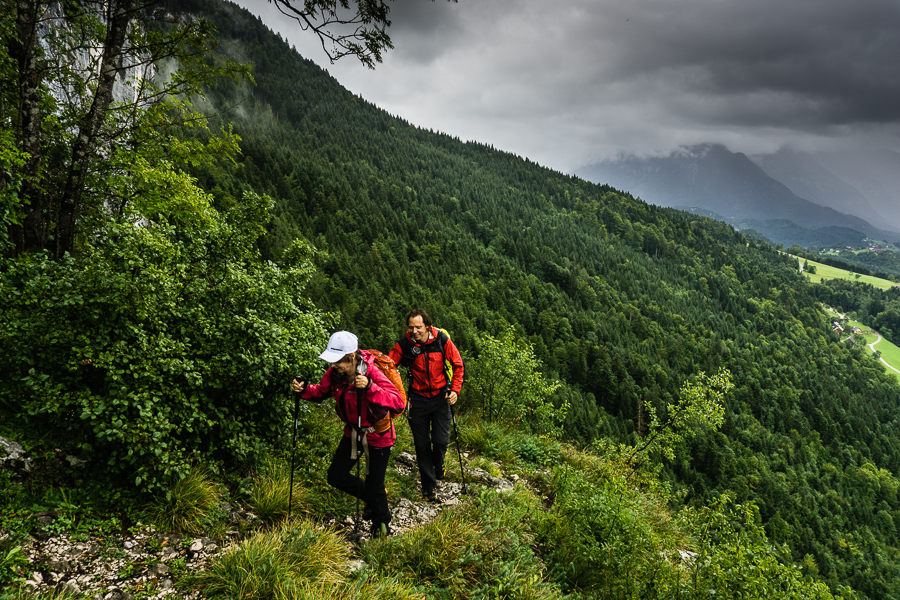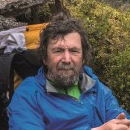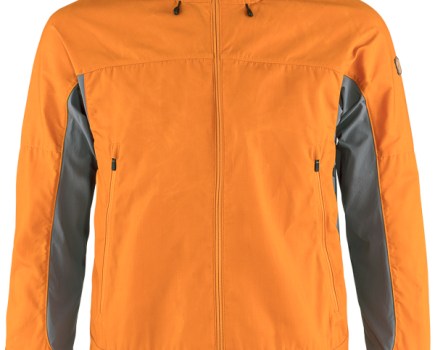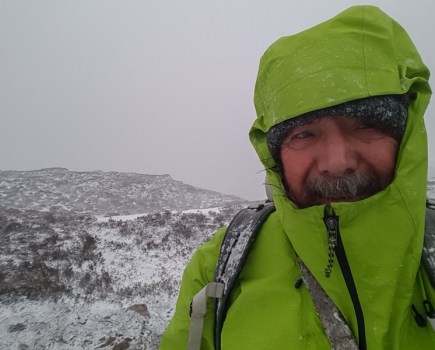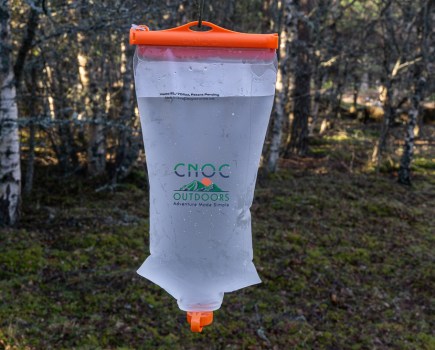Chris Townsend is a world-leading authority on outdoor gear. In his weekly column, he assesses new innovations and tests exclusive early samples of new kit. This week he sees for himself how trekking poles are manufactured
Trekking pole revelations
Ever thought about how trekking poles are made? I hadn’t until I visited Komperdell in Austria along with three other outdoor writers. On the way there I considered what I knew about pole manufacture. Nothing really, though I assumed it must be fairly simple. A tour round the Komperdell factory showed me I was completely wrong. Making poles is a complex business involving many stages and much specialist machinery, some purpose-designed by Komperdell staff. For tasks such as lacquering the temperature and cleanliness of the air is critical and the rooms in which these take place are sealed. Poles have to be cut to the right lengths, internal and external adjusters slotted in firmly, handles attached. In all I found seeing and hearing about the process much more fascinating than I expected. I’ll never look at a pole the same way again!
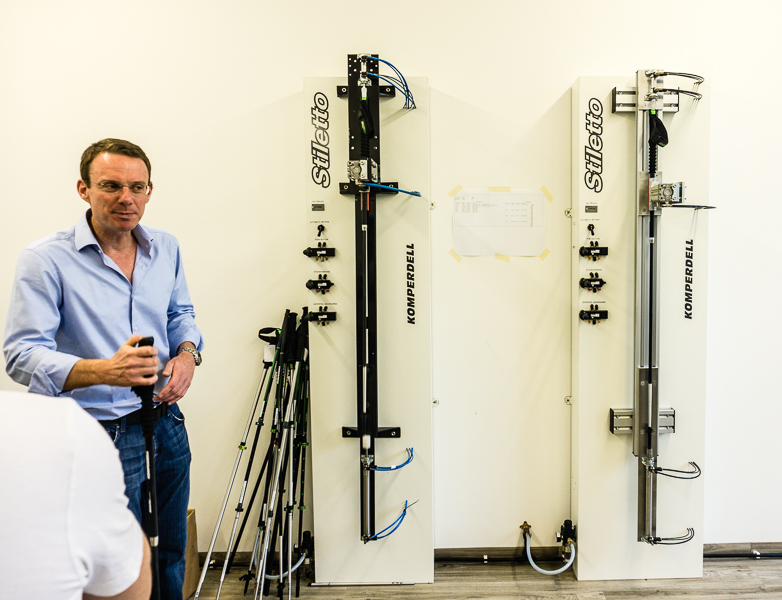
We were shown round by CEO Thomas Roiser, whose passion for his family company and its products shone through as he enthusiastically described every aspect of pole manufacture. Komperdell started out making ski poles and they still make these, both Alpine and Nordic, as well as trekking and Nordic walking poles. In all 23,000 pairs of poles are made every week. Komperdell is now the only pole company still manufacturing in Europe. All its poles are made in the factory we visited. Environmentally production is quite friendly with recycled materials such as aluminium used where possible, packing kept low, and only water soluble coatings used. Poles are thoroughly tested and there’s a repair facility for any that do come back damaged.
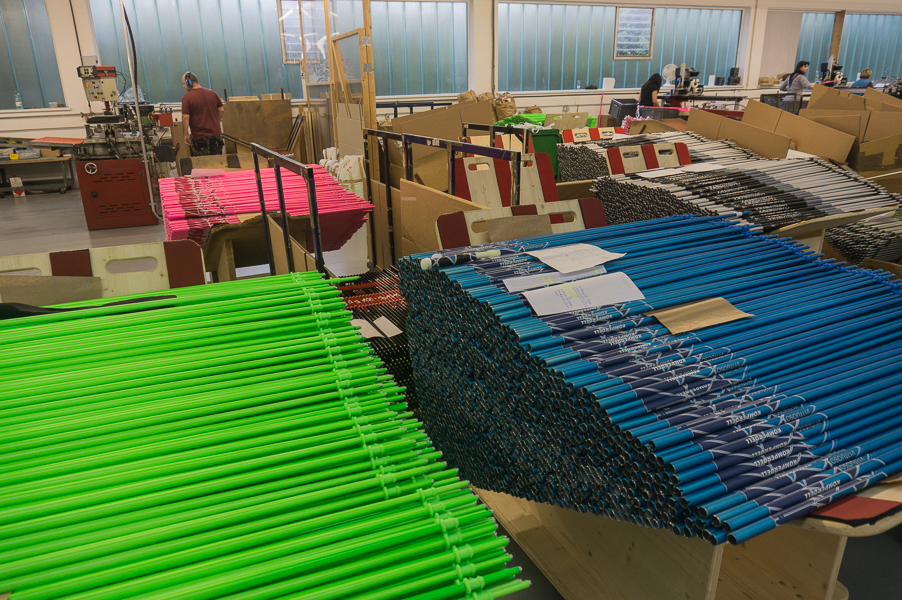
Komperdell is situated in a beautiful location in Mondsee in the limestone foothills of the Alps and after the factory tour we went on a walk up 1278 metre Predigstuhl to try out some poles, specifically those with a new handle material that is said to be soft, grippy and non-sweaty – I found it very comfortable. This will be introduced across the whole range next year. It also has the advantage that graphics can be printed on it so pole patterns can be continued into the handle.
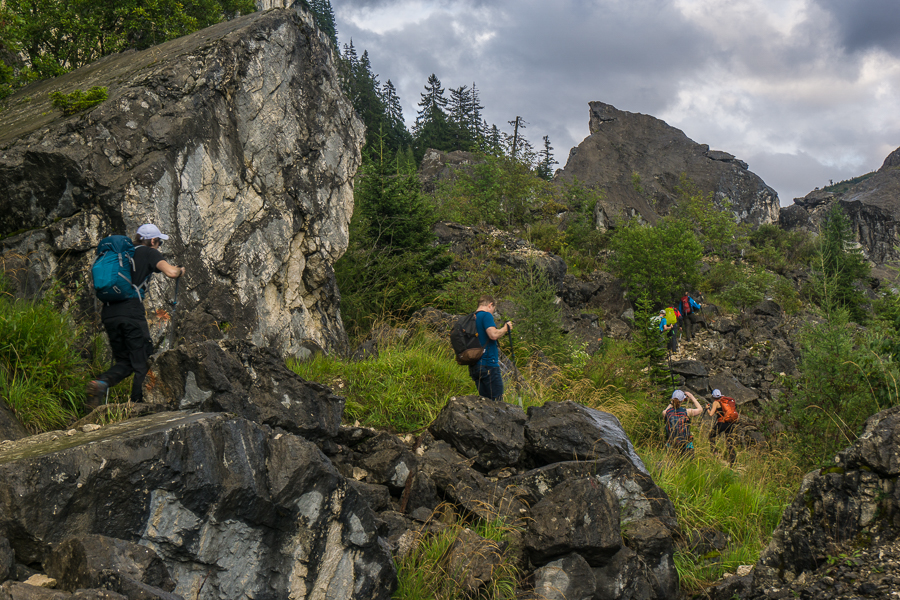
Our walk on a wet, cloudy day was mostly in steep forests with many rocks and boulders to clamber over and around. It was certainly a place where poles were often useful. From the edges of limestone cliffs we had dramatic views over the valley below, across lakes and green fields to distant cloud-capped mountains. Komperdell has all this on the doorstep. If I didn’t live in the Cairngorms I’d have been jealous!
